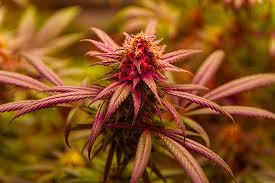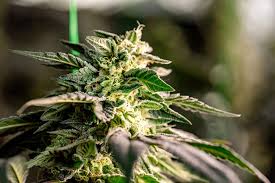In recent years, cannabis seeds canada have gained immense popularity among enthusiasts and cultivators alike. With the legalization of cannabis in Canada, more people are exploring the diverse world of cannabis cultivation. Whether you are a seasoned grower or a beginner keen on learning about this fascinating plant, understanding the nuances of cannabis seeds is essential for a successful growing experience. This article aims to delve into the various aspects of cannabis seeds in Canada, including types, cultivation techniques, and legal considerations.
Types of Cannabis Seeds
Cannabis seeds come in various types, each offering different benefits depending on the cultivation goals. The primary types of cannabis seeds include:
1. Regular Seeds
Regular seeds are a mix of male and female plants. These seeds are suitable for those interested in breeding cannabis. However, they require a more experienced hand as identifying and managing male plants is crucial to avoid unwanted pollination.
2. Feminized Seeds
Feminized seeds are bred to produce only female plants, which are the ones that produce buds. For most home growers, feminized seeds are the preferred choice due to their efficiency in producing harvestable flowers without the need to identify and remove males.
3. Auto-flowering Seeds
Auto-flowering seeds are a hybrid variety that automatically transitions from the vegetative stage to the flowering stage based on age, rather than light cycles. This makes them ideal for growers in regions with shorter growing seasons or for those seeking quicker harvests.
Growing Cannabis Seeds in Canada
Growing cannabis from seeds is both an art and a science. Here are some essential tips to ensure a successful grow:
1. Choosing the Right Seeds

Start by selecting seeds that are well-suited to your growing environment and goals. Research different strains, as each has unique growth characteristics, flavors, and effects. Consider factors such as THC and CBD levels, resistance to pests, and overall yield.
2. Germination Process
The germination process is where it all begins. You can germinate seeds using the paper towel method or planting them directly into the soil. It is crucial to maintain a warm, moist environment. Once seeds sprout, it’s important to transfer them into a suitable growing medium.
3. Choosing the Right Growing Medium
Cannabis can be grown in various mediums, including soil, hydroponics, and coco coir. Soil is the most common choice for beginners due to its forgiving nature and ability to retain moisture. Hydroponics, on the other hand, requires a more careful approach but can yield faster growth.
4. Light Requirements
Light is vital for cannabis growth. Indoor growers usually opt for LED grow lights or high-intensity discharge (HID) lights to mimic sunlight. Outdoor growers should ensure their plants receive ample sunlight, ideally 6-8 hours a day.
5. Nutrients and Watering
Cannabis plants require specific nutrients throughout their growth stages. During the vegetative stage, they need high nitrogen levels, while the flowering phase requires increased phosphorus and potassium. Proper watering is also essential; overwatering can lead to root rot, while underwatering may stunt growth.
Legal Considerations in Canada
Canada has established clear regulations surrounding the cultivation of cannabis. As of October 2018, adults are permitted to cultivate up to four cannabis plants per household for personal use. However, the seeds must be purchased from licensed sellers.
It is important to remain updated on local regulations, as provinces may have specific laws governing cannabis cultivation. Additionally, using cannabis responsibly and discreetly will help foster a positive community perception of home growers.

Common Challenges When Growing Cannabis
Even seasoned growers encounter challenges when growing cannabis. Here are a few common issues and how to address them:
1. Pests and Diseases
Pests such as aphids, spider mites, and mold can threaten the health of your plants. Implementing preventive measures, such as using organic pesticides or companion planting, can help keep pests at bay.
2. Nutrient Deficiencies
Signs of nutrient deficiencies include yellowing leaves, stunted growth, or brown spots. Regularly check your plants and adjust nutrient levels accordingly. Using quality soil and fertilizers can mitigate these issues.
3. Environmental Factors
Maintaining ideal temperature, humidity, and airflow is essential for plant health. Indoor growers should invest in fans, temperature control devices, and humidity monitors to create the optimal environment.
The Future of Cannabis Seeds in Canada
The cannabis seed market in Canada is expected to continue growing, with increasing interest in innovative strains and cultivation techniques. The introduction of more research and development, as well as advancements in breeding, will likely yield strains with better potency, flavor, and disease resistance.
As people become more aware of the health benefits associated with cannabis, the demand for high-quality seeds will increase. This creates an exciting opportunity for growers to experiment with new genetics and contribute to the evolving cannabis culture in Canada.
Conclusion
Understanding cannabis seeds is crucial for anyone interested in cultivating this remarkable plant. By selecting the right seeds, creating a suitable growing environment, and adhering to legal guidelines, individuals can enjoy the rewarding experience of growing their own cannabis. With the evolving landscape of cannabis in Canada, there has never been a better time to delve into the world of cannabis cultivation.
